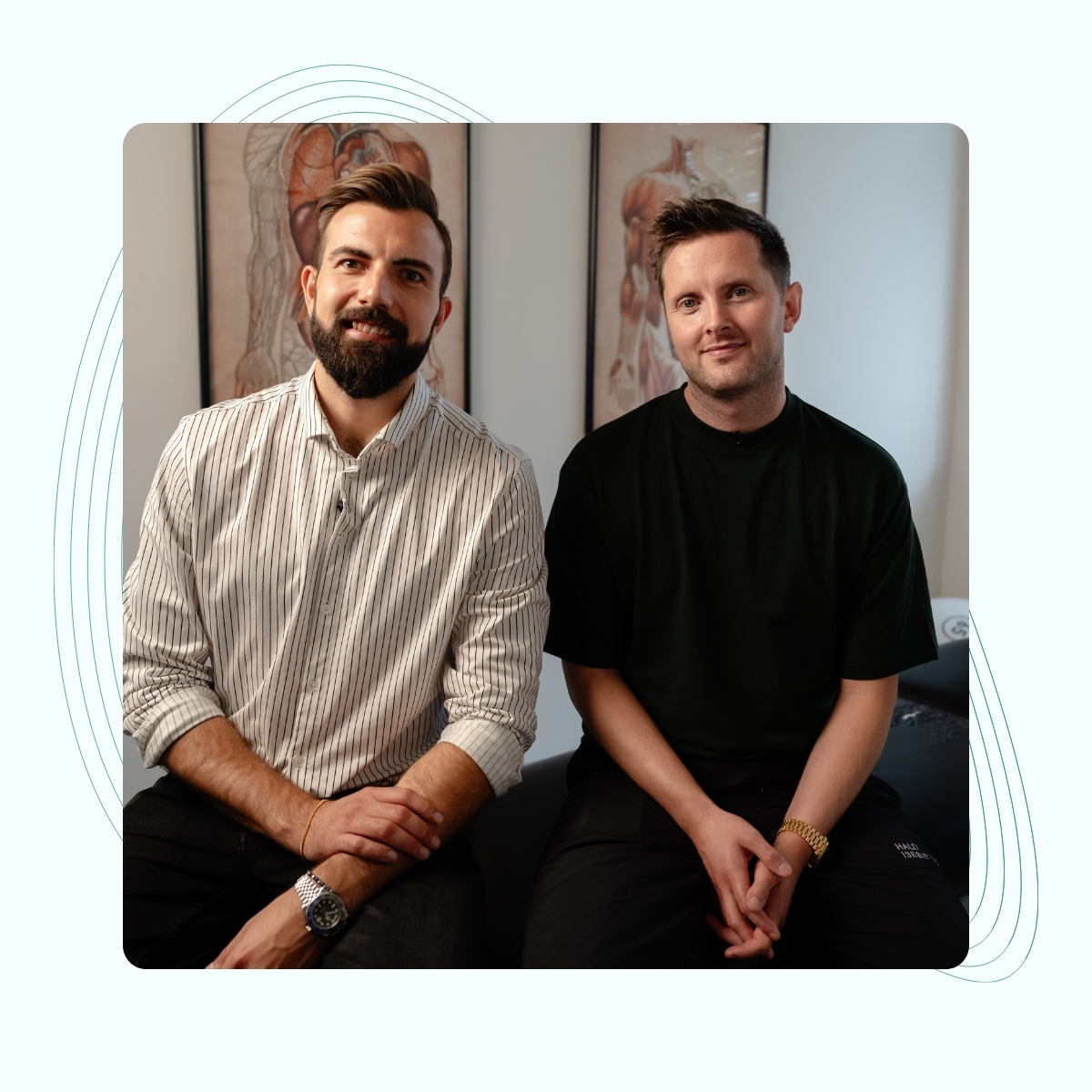Learn more about
Spinal stenosis
Spinal stenosis
Spinal stenosis is a condition in which the spinal canal, which contains the spinal cord and nerve roots, narrows. The condition is very common and for the vast majority of people is symptom-free. However, in some cases, the narrowing can lead to permanent pressure on the nerves, which can result in pain, numbness and reduced function in the legs or arms, depending on the location of the stenosis. Spinal stenosis most often occurs in either the cervical or lumbar vertebrae, i.e. in the neck or lower back.
Treatment depends on the severity and may include exercise, manual therapy, pain medication, and in more severe cases, surgery to reduce pressure on the spinal cord or nerves. All of this will be discussed in more detail in this article. (1)
Are you suffering from back pain? Book an appointment today
Jump to section [Vis]
Anatomy of the spine and understanding stenosis
The extension of our brain and brainstem is called the spinal cord. Our spine is a complex structure that, in the form of 33 vertebrae, forms a canal that protects the spinal cord and at the same time supports the body’s movements and stability. Between the vertebrae are cartilage discs (disci), which act as shock absorbers, as well as small joints (facet joints) that allow movement in the spine. In many people, degenerative changes develop in both cartilage discs and joints with age, which can lead to spinal stenosis, especially in the lower back and neck, where the spine is most mobile and loaded.
The spine consists of 33 vertebrae, which are divided into five main regions:
- Cervical vertebrae (neck): There are seven cervical vertebrae (C1–C7) at the top of the spine that support the movement of the head and protect the upper parts of the spinal cord. This part of the spine is particularly mobile, but also prone to wear and tear and injury, which can lead to cervical spinal stenosis. Spinal stenosis in this area can cause symptoms such as neck pain, as well as decreased muscle strength and/or sensory disturbances in the arms and hands.
- Thoracic vertebrae (chest): The 12 thoracic vertebrae (T1–T12) form a more stable part of the spine as they are connected to the ribs. This area is rarely affected by spinal stenosis due to its limited mobility.
- Lumbar vertebrae (lower back): The five lumbar vertebrae (L1–L5) are larger and more massive to support the weight of the body. The lumbar region is particularly vulnerable to degenerative changes, such as osteoarthritis, and is one of the most common sites of spinal stenosis. In lumbar spinal stenosis, narrowing of the spinal canal can press on nerve roots, which can lead to low back pain, sciatica (radiating pain down the legs), weakness, and decreased sensation in the legs.
- Sacral vertebrae (sacrum): The five sacral vertebrae (S1–S5) are fused together into one piece of bone, the sacrum, and connect the spine to the pelvis. Sacral stenosis is rare, but changes here can affect pelvic functions.
- Coccygeal vertebrae (tailbone): The four lower vertebrae make up the tailbone, which has a minimal role in movement and protection of nerves.

Causes and risk factors for developing spinal stenosis
Spinal stenosis most often occurs as part of the body’s natural aging process, where wear and tear and degenerative changes, such as osteoarthritis, affect the spine. This can lead to thickening of ligaments, the formation of bone spurs, and changes in joint structures, which further narrow the space in the spinal canal.
Here is a brief overview of the main causes and risk factors for developing spinal stenosis:
- Age-related changes: Wear and thickening of ligaments, development of bone growths (osteophytes) and decreased disc quality with age.
- Disc herniation and spondylolisthesis: Discs can bulge and press on nerves, and vertebrae can also shift, causing pressure on the spinal cord.
- Arthritis: Osteoarthritis and rheumatoid arthritis can affect the joints of the spine, causing narrowing of the spinal canal.
- Hereditary conditions: Congenital narrow spinal canal, curved spine (scoliosis), and genetic conditions such as achondroplasia that affect bone formation.
- Other conditions: Spinal tumors, fractures, Paget’s disease, and calcification of the ligaments along the spine. (2)
Symptoms and signs of spinal stenosis
The typical symptoms and signs of spinal stenosis can vary depending on whether the condition occurs in the lower back (lumbar stenosis) or the neck (cervical stenosis). In addition, the intensity also varies depending on the severity of the stenosis.
Here is an overview of the most common symptoms:
General symptoms of spinal stenosis: (3)
- Pain: Often occurs in the back or neck, and the pain may be worsened by activities such as standing or walking.
- Radiating pain (sciatica): Pain can radiate from the lower back down into the buttocks and legs.
- Sensory disturbances: Decreased sensitivity, tingling, or numbness in the arms, hands, legs, or feet.
- Muscle weakness: Weakened muscle strength, often in the legs or arms, which can affect balance and mobility.
Symptoms of cervical spinal stenosis (neck): (2)
- Neck pain: Often accompanied by headaches or tension in the neck.
- Fine motor problems: Difficulties in performing precise hand movements, which can make it difficult to write or button clothes.
Symptoms of lumbar spinal stenosis (lower back): (3)
- Low back pain: Pain in the lower back, which may feel like stiffness or pressure.
- Sciatica pain: Radiating pain down through the buttocks, thighs, and often all the way down to the feet.
- Coordination difficulties: Balance problems and lack of coordination that can lead to more difficulty walking.
- Worsening with physical activity: Symptoms may worsen with walking or standing and improve with rest or sitting.
- Fatigue and leg cramps: Especially with prolonged walking or standing, known as “neurogenic claudication.”

Diagnostic methods: MRI scan, CT scan and X-ray
Diagnosis is based on your medical history and your doctor’s assessment of your nervous system through a neurological examination. In some cases, you may be referred for an MRI or CT scan to confirm the diagnosis. This is often the case in people with severe and progressive symptoms such as pain, radiating pain, decreased sensation and/or loss of strength in the arms or legs. (4)
If you have low back or neck pain, with or without radiating pain, a scan is usually not recommended as a first step. This is because there is often no close correlation between what a scan shows and the symptoms you are experiencing. Although there may be findings on the scan, it cannot be said with certainty that these findings are the cause of the pain.
In one study, 67 pain-free individuals were examined with MRI scans. It was found that 20% of those under 60 years of age had a herniated disc, and one person had spinal stenosis. Among participants over 60 years of age, 36% had a herniated disc, and 21% had spinal stenosis. (5)
A similar study with the same results has also been conducted on asymptomatic individuals with, among other things, cervical spinal stenosis. (6)
The results showed that there was often no clear correlation between the scan findings and the symptoms the participants had. This means that it is possible to have spinal stenosis on a scan without experiencing symptoms – and conversely, you can have symptoms even if the scan shows no signs of spinal stenosis.
The relationship between spinal stenosis and sciatica
The relationship between sciatica and spinal stenosis is based on how the narrowing of the spinal canal (spinal stenosis) can cause pressure on the nerves that run from the spinal cord down into the legs. This pressure on the nerves can lead to symptoms similar to sciatica, which is the term for pain, sensory disturbances, and weakness in the buttocks and legs, often due to irritation or pressure on the sciatic nerve.
Although both conditions can cause pain and sensory disturbances in the legs, the cause of sciatica is often a herniated disc, muscle compression of the sciatic nerve (e.g., piriformis syndrome), or other specific nerve compression, while spinal stenosis is a more structural narrowing of the spinal canal, often caused by bone growths (osteophytes) or joint changes. However, spinal stenosis can be the cause of sciatica symptoms when the nerves, including the sciatic nerve, are affected by this narrowing.
In many cases, the treatment of both conditions will overlap, as the focus will be on reducing pressure on the affected nerves and relieving pain and sensory disturbances.

Conservative treatment options: Medicine, osteopathy and lifestyle changes
Steroid injections, also called blocks, are sometimes used to treat spinal stenosis, but they do not appear to be effective in the short or long term. They also do not provide any additional benefit over local anesthetics alone. Because steroid injections can cause side effects, they should not be the first choice of treatment. (7)
Physical activity and exercise should be an essential part of spinal stenosis treatment, as it appears to reduce pain, improve walking distance, increase physical function, and provide several health benefits. Guided exercise may be more effective than self-exercise, as people who exercise with the support of a physical therapist or osteopath often achieve greater improvements in both physical function and pain levels compared to those who exercise without professional help. Studies show that 59-81% can experience significant, long-term improvements in physical function and pain through regular exercise. (8) (9)
Manual therapy and exercise are often used together, making it difficult to determine which one has the greatest effect. Both treatments are considered relatively safe, and side effects are usually limited to short-term soreness. For some, manual therapy can be experienced as pleasant and promote movement, which helps to create greater confidence in the body. (9)
The osteopathic approach is based on a manual therapy approach that focuses on the structural and functional integrity of the body. Osteopaths use a variety of techniques, including joint mobilization, soft tissue therapy, and exercise, to improve range of motion, reduce pain, and promote the body’s natural healing processes. The treatment helps relieve symptoms, increase function, and improve overall quality of life.
Surgical procedures for spinal stenosis
The preferred type of surgery for spinal stenosis is called a decompression surgery. The purpose of the surgery is to create more space for the nerves in the spinal canal. This is done by removing the bone tissue and any thickened ligaments that are pressing on the nerves. The surgery takes 1-2 hours and is performed under general anesthesia. It is expected that you will be able to go home the same day as the surgery, and that you will be on sick leave for 6-8 weeks after the surgery. (10)
Only a small number of people with spinal stenosis need surgery, as conservative treatment methods often give good results and have almost no side effects. However, between 10-24% of people who have surgery experience side effects from the surgery, and up to 17% need a second operation within the first 4 years. Surgery may still be an option, but should only be considered if a longer period of conservative measures such as exercise, information and lifestyle changes have not provided the desired relief. In addition, symptoms such as those listed below must also be present before surgery is considered: (11) (12)
- Loss of control over bowel movements, urination, or sexual function.
- Severe sensory disturbances that do not decrease over time.
- Sensory disturbances in the breeches area (abdomen and inner thighs).
- Severe loss of strength in, for example, arms or legs.
If you experience any of these symptoms, it does not necessarily mean that you need surgery, but that further investigation should be considered.

Prevention and tips for coping with life with spinal stenosis
Regular exercise and strength training
Exercise, especially strength training and stability exercises for the back and core muscles, can help improve spinal stability and reduce stress on affected areas.
Cardiovascular exercise, such as walking, cycling, or rowing, increases blood flow to relevant muscles and joints and reduces stiffness, which can reduce pain and promote mobility.
Stretching and flexibility exercises
Flexibility exercises and stretches for the lower back, hips, and hamstrings can relieve tension and reduce pressure on the spinal cord and nerves.
Manual processing
For some, manual therapy can help increase mobility in the back or neck, thereby promoting healing, reducing the level of pain experienced, and reducing fear of movement.
Posture and ergonomics
Paying attention to your posture in everyday life can reduce unnecessary pressure on your spine and nerves. Use proper lifting techniques and consider ergonomic adjustments in your workplace to best support your back.
Weight loss and dietary changes
Maintaining a healthy weight reduces stress on the spine, which can relieve symptoms of spinal stenosis. A diet rich in anti-inflammatory foods like vegetables, fruits, whole grains, and healthy fats can also reduce inflammation and improve overall health.
Painkillers
Painkillers and anti-inflammatory drugs (such as NSAIDs) may be helpful for short-term relief, but long-term use should be avoided due to side effects. In addition, there is evidence that heat and cold therapy and massage can reduce pain and improve mobility.
Learn to listen to your body
It is important to find a balance between activity and rest. Overexertion can worsen symptoms, while moderate activity can be beneficial. It may therefore be a good idea to break down daily tasks into smaller parts and take frequent breaks.
Consider psychological support
Cognitive behavioral therapy (CBT) and mindfulness have been shown to be effective in managing chronic pain by reducing stress and promoting a positive approach to pain relief.
Together, these preventive measures can help improve the quality of life for people with spinal stenosis and potentially reduce the need for medical treatment.
Reference list
- Spinalstenose – Lægehåndbogen hos Sundhed.dk [Internet]. 2024.
- Spinalstenosis – National Institue of Health [Internet]. Spinal stenosis – National Institue of Health.
- Munakomi S, Foris LA, Varacallo M. Spinal Stenosis and Neurogenic Claudication. I: StatPearls [Internet]. Treasure Island (FL): StatPearls Publishing; 2024 [henvist 3. november 2024]. Tilgængelig hos: http://www.ncbi.nlm.nih.gov/books/NBK430872/
- Comer C, Ammendolia C, Battié MC, Bussières A, Fairbank J, Haig A, m.fl. Consensus on a standardised treatment pathway algorithm for lumbar spinal stenosis: an international Delphi study. BMC Musculoskelet Disord. december 2022;23(1):550.
- Boden SD, Davis DO, Dina TS, Patronas NJ, Wiesel SW. Abnormal magnetic-resonance scans of the lumbar spine in asymptomatic subjects. A prospective investigation. J Bone Joint Surg Am. marts 1990;72(3):403–8.
- Boden SD, McCowin PR, Davis DO, Dina TS, Mark AS, Wiesel S. Abnormal magnetic-resonance scans of the cervical spine in asymptomatic subjects. A prospective investigation. J Bone Joint Surg Am. september 1990;72(8):1178–84.
- Wessberg P, Frennered K. Central lumbar spinal stenosis: natural history of non-surgical patients. Eur Spine J Off Publ Eur Spine Soc Eur Spinal Deform Soc Eur Sect Cerv Spine Res Soc. oktober 2017;26(10):2536–42.
- Ammendolia C, Côté P, Southerst D, Schneider M, Budgell B, Bombardier C, m.fl. Comprehensive Nonsurgical Treatment Versus Self-directed Care to Improve Walking Ability in Lumbar Spinal Stenosis: A Randomized Trial. Arch Phys Med Rehabil. december 2018;99(12):2408-2419.e2.
- Ammendolia C, Hofkirchner C, Plener J, Bussières A, Schneider MJ, Young JJ, m.fl. Non-operative treatment for lumbar spinal stenosis with neurogenic claudication: an updated systematic review. BMJ Open. 19. januar 2022;12(1):e057724.
- Spinalstenoseoperation i lænderyggen – Region Midtjylland.
- Zaina F, Tomkins-Lane C, Carragee E, Negrini S. Surgical versus non-surgical treatment for lumbar spinal stenosis. Cochrane Database Syst Rev. 29. januar 2016;2016(1):CD010264.
- 12. Deyo RA, Martin BI, Kreuter W, Jarvik JG, Angier H, Mirza SK. Revision surgery following operations for lumbar stenosis. J Bone Joint Surg Am. 2. november 2011;93(21):1979–86.

Often related injuries
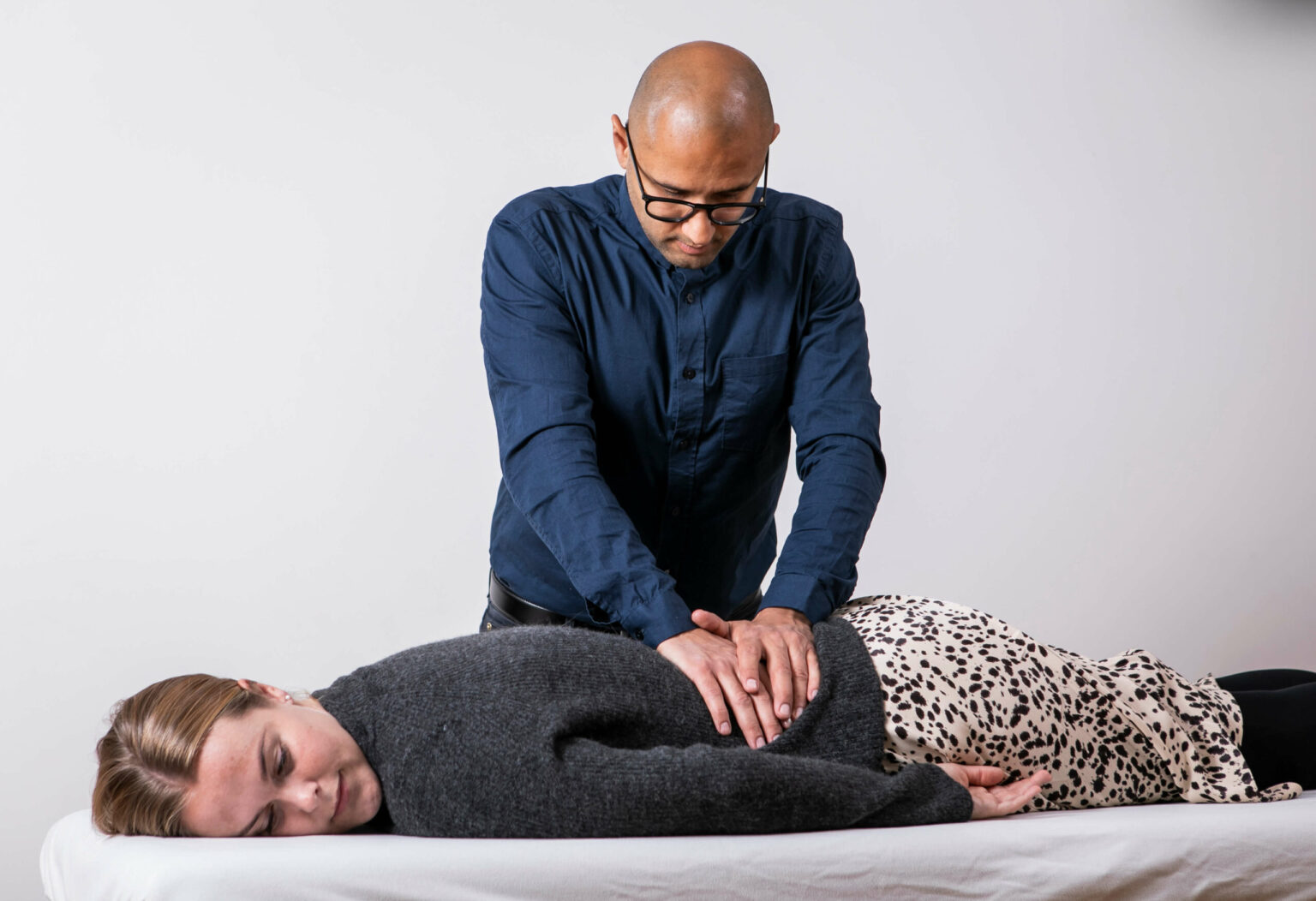
Spinal stenosis
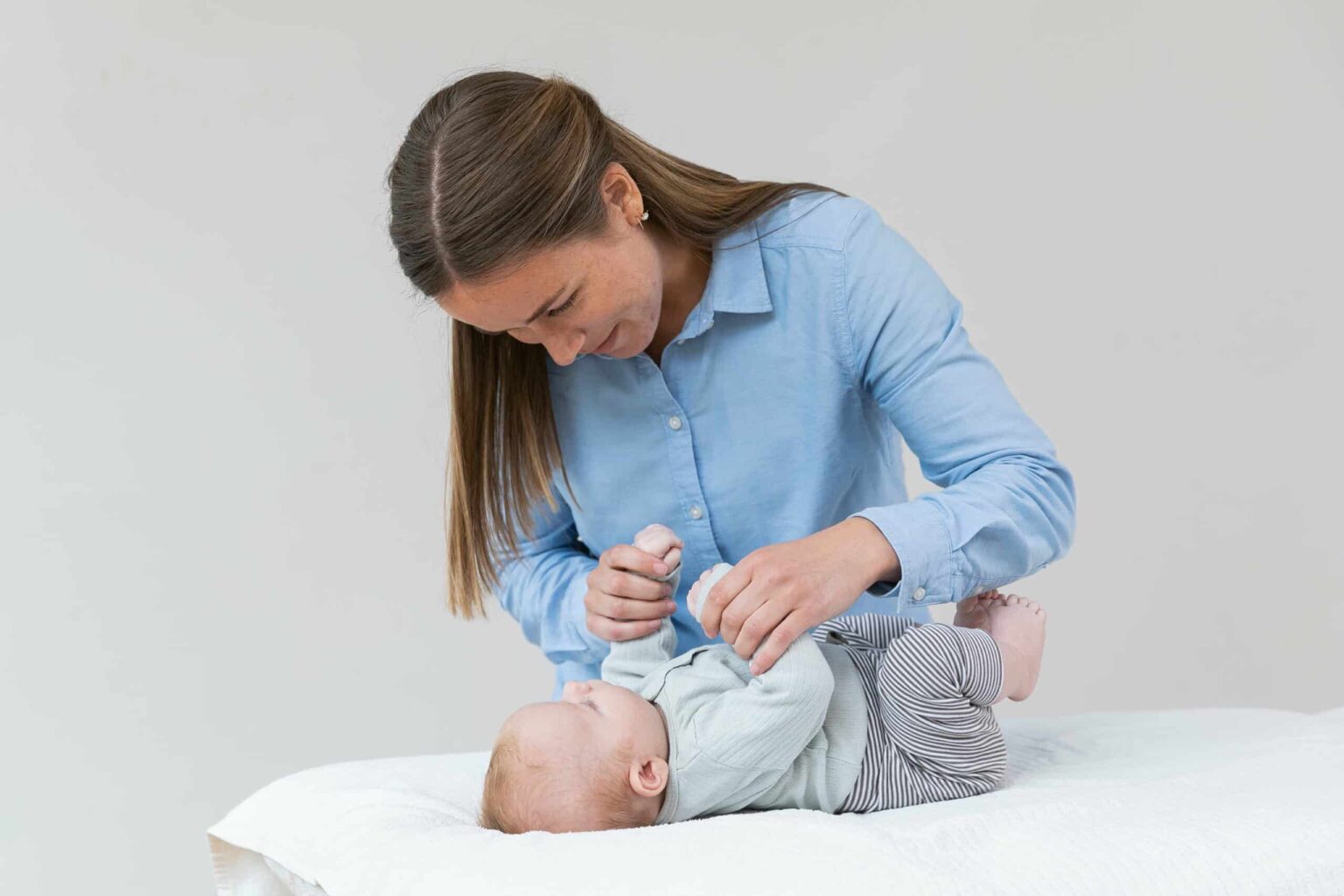
Hypermobility in babies and children
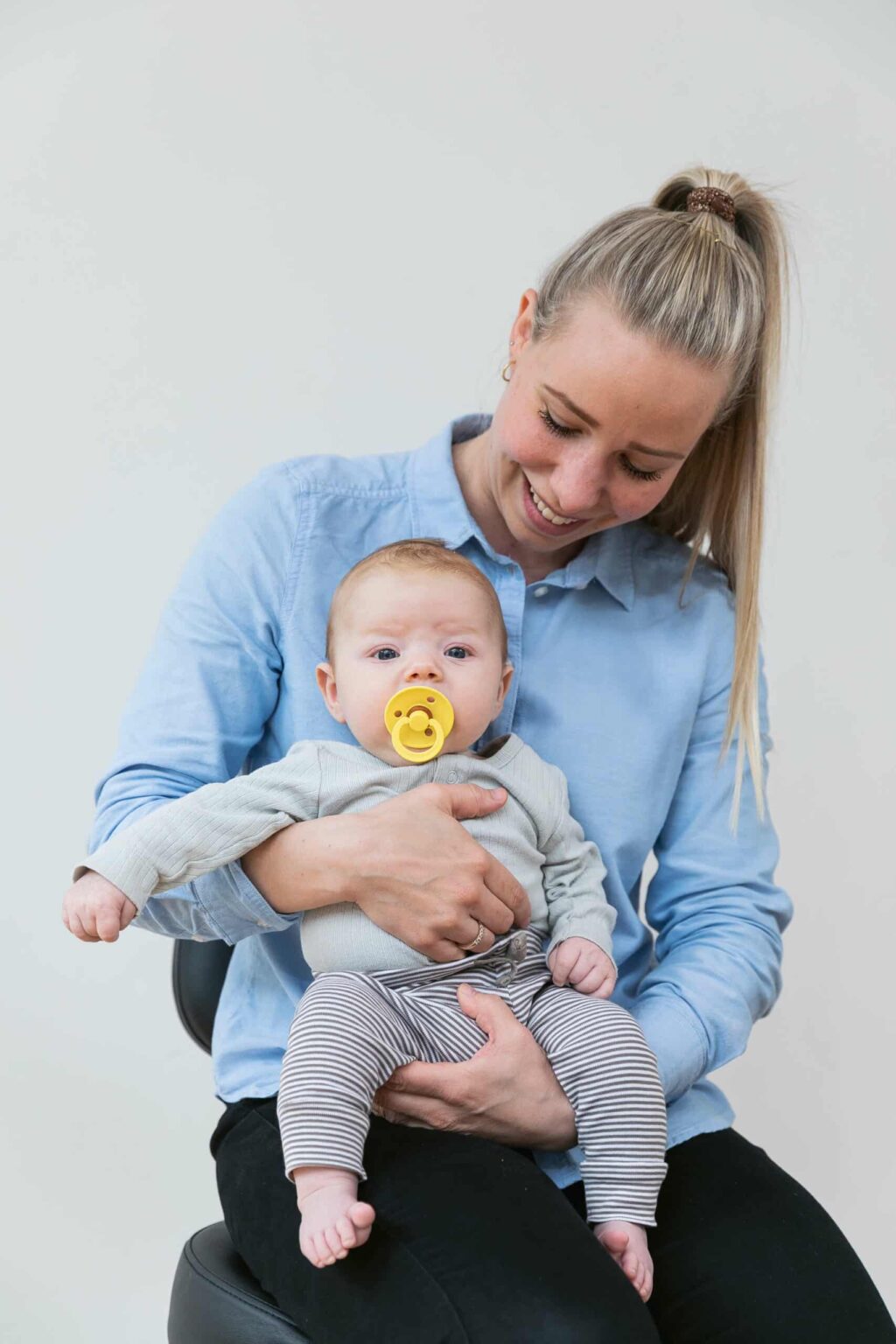
Muscle tension or imbalances in babies and children
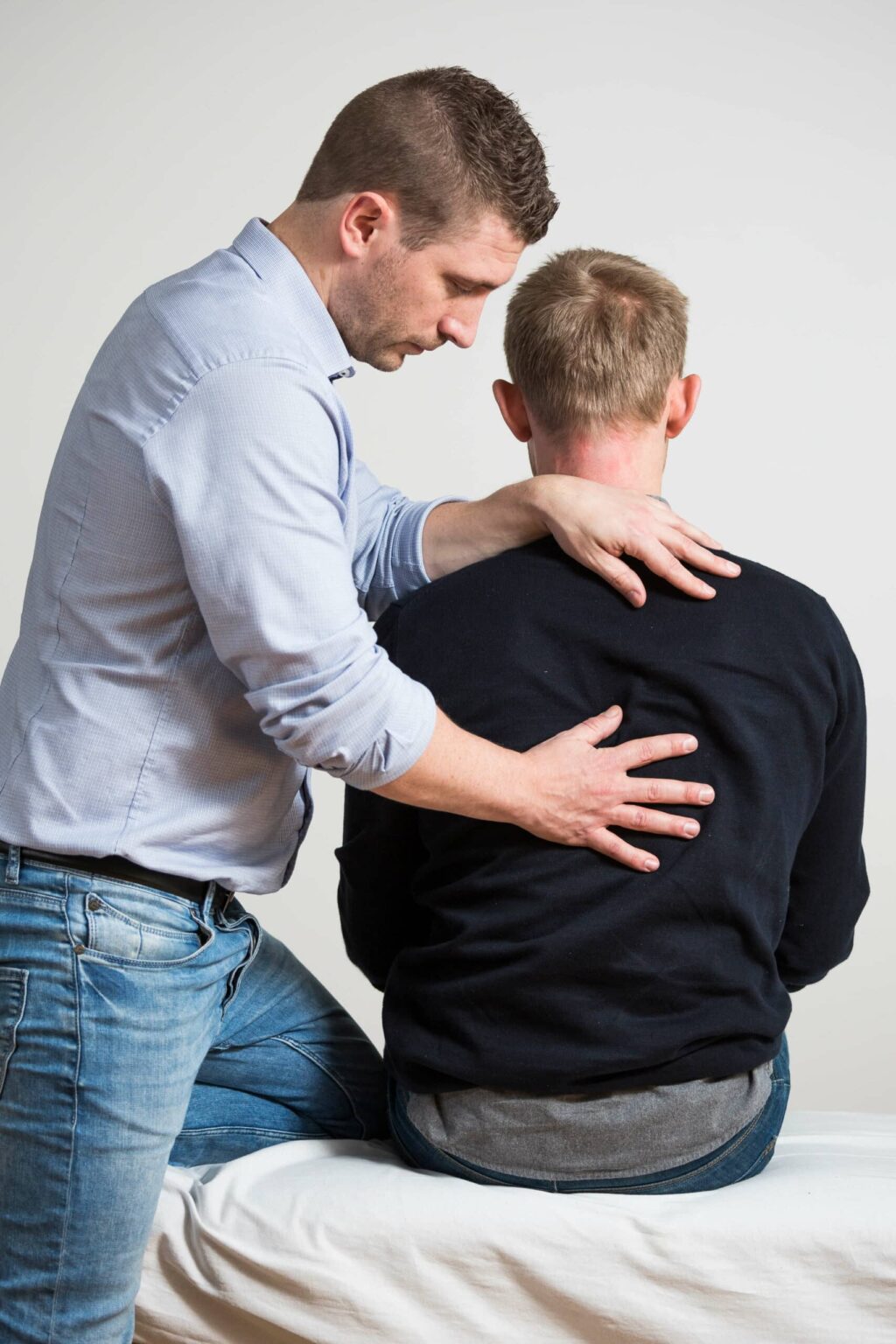
Modic Changes
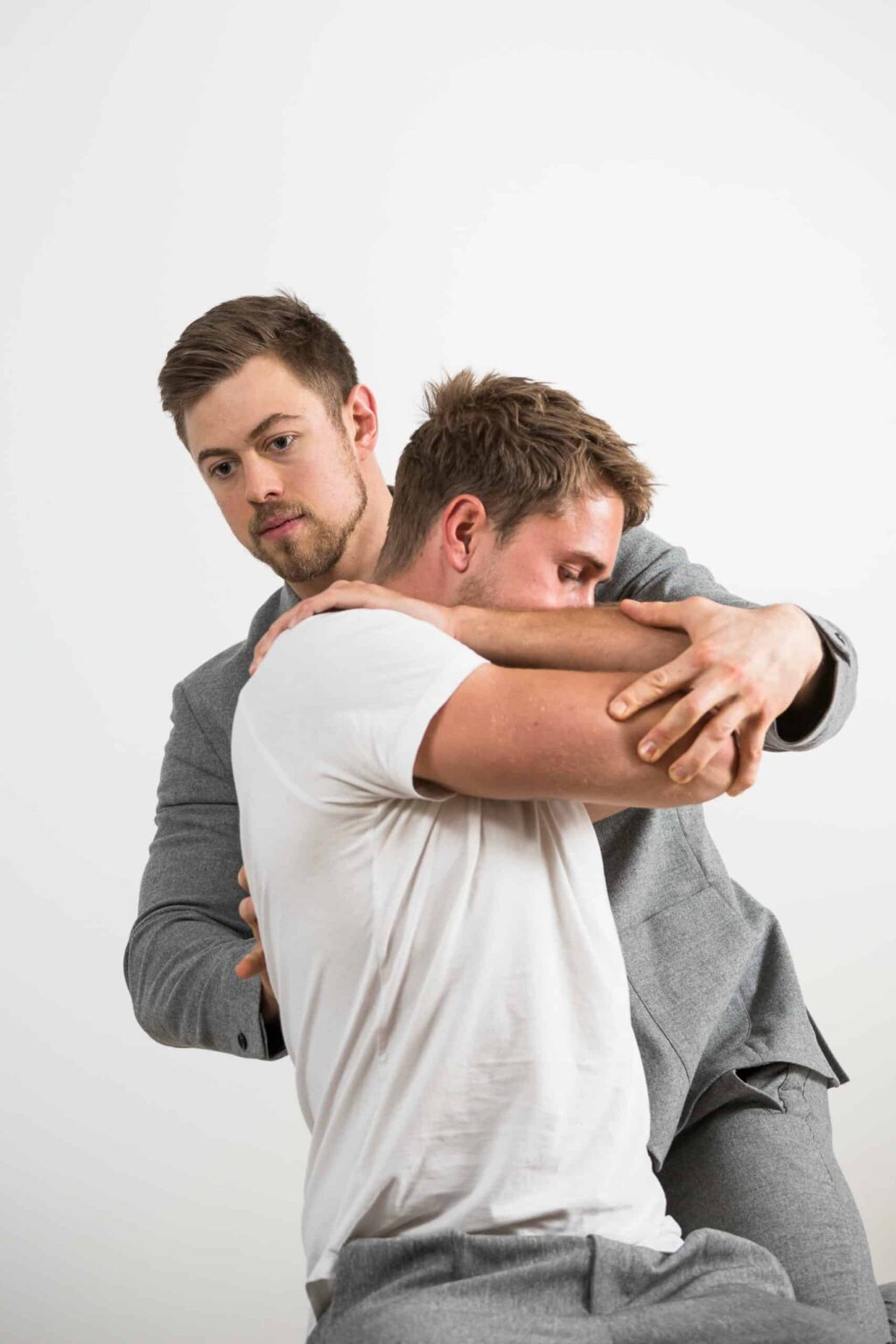
Disc herniation
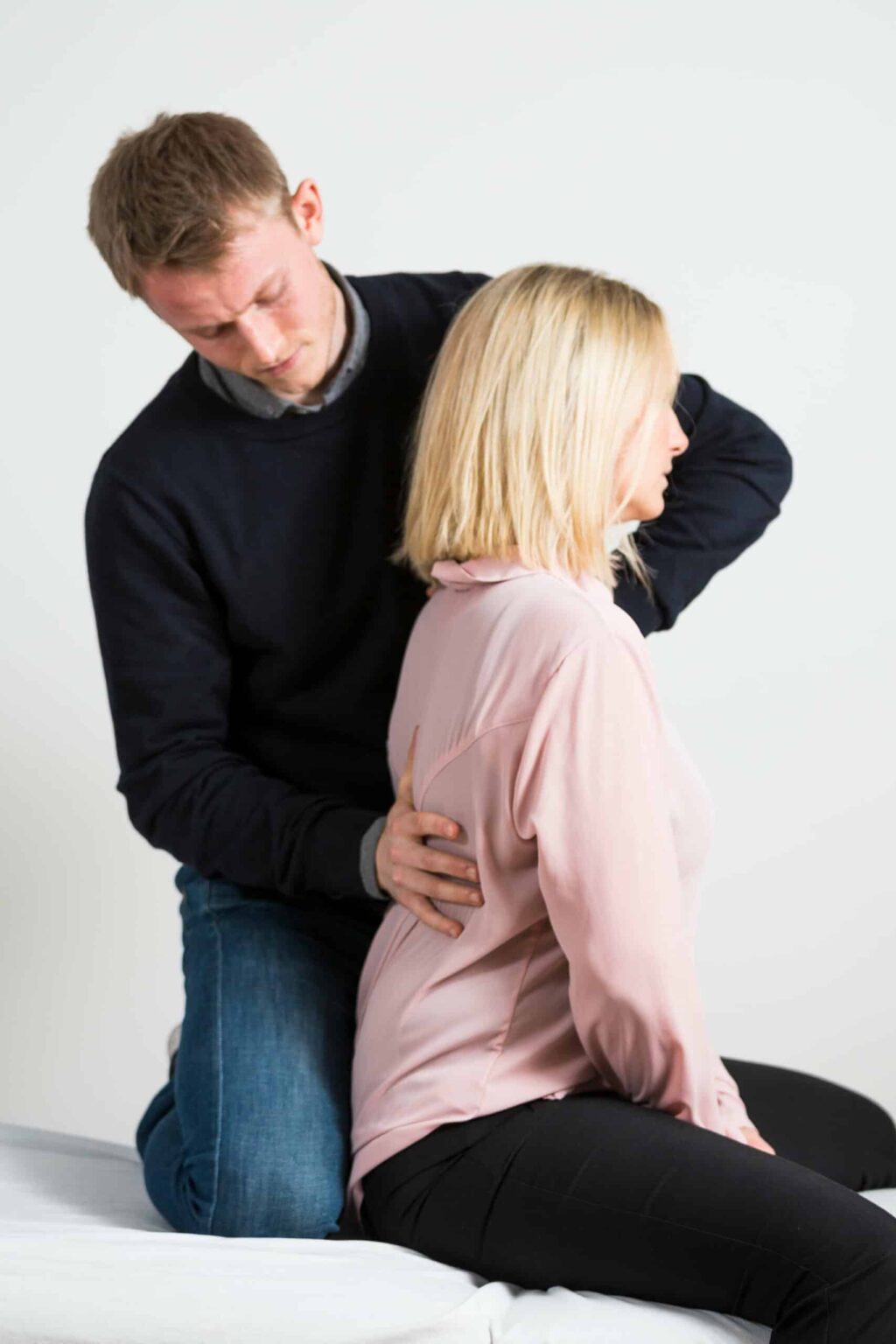
Spinal arthritis
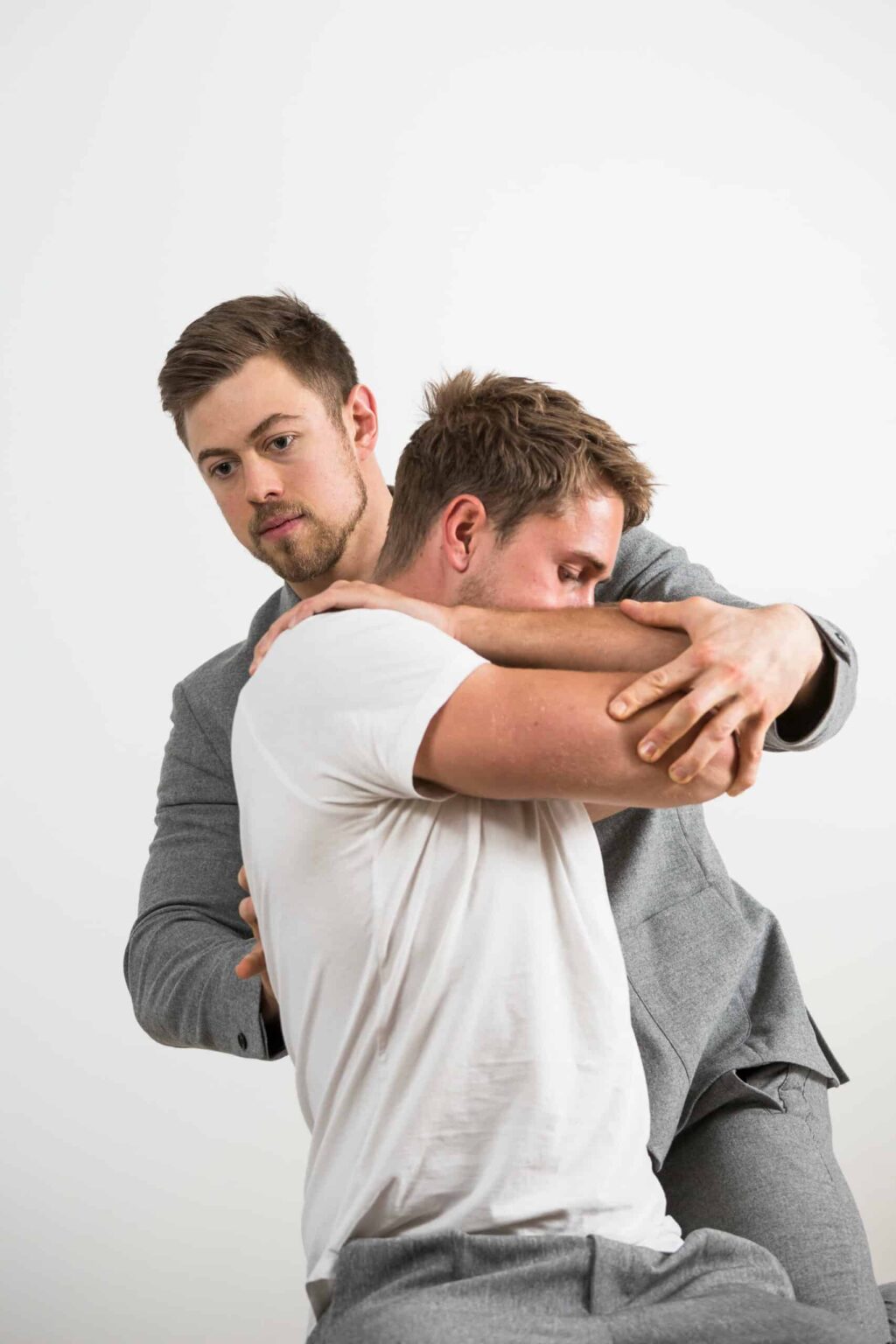
Winged scapula

